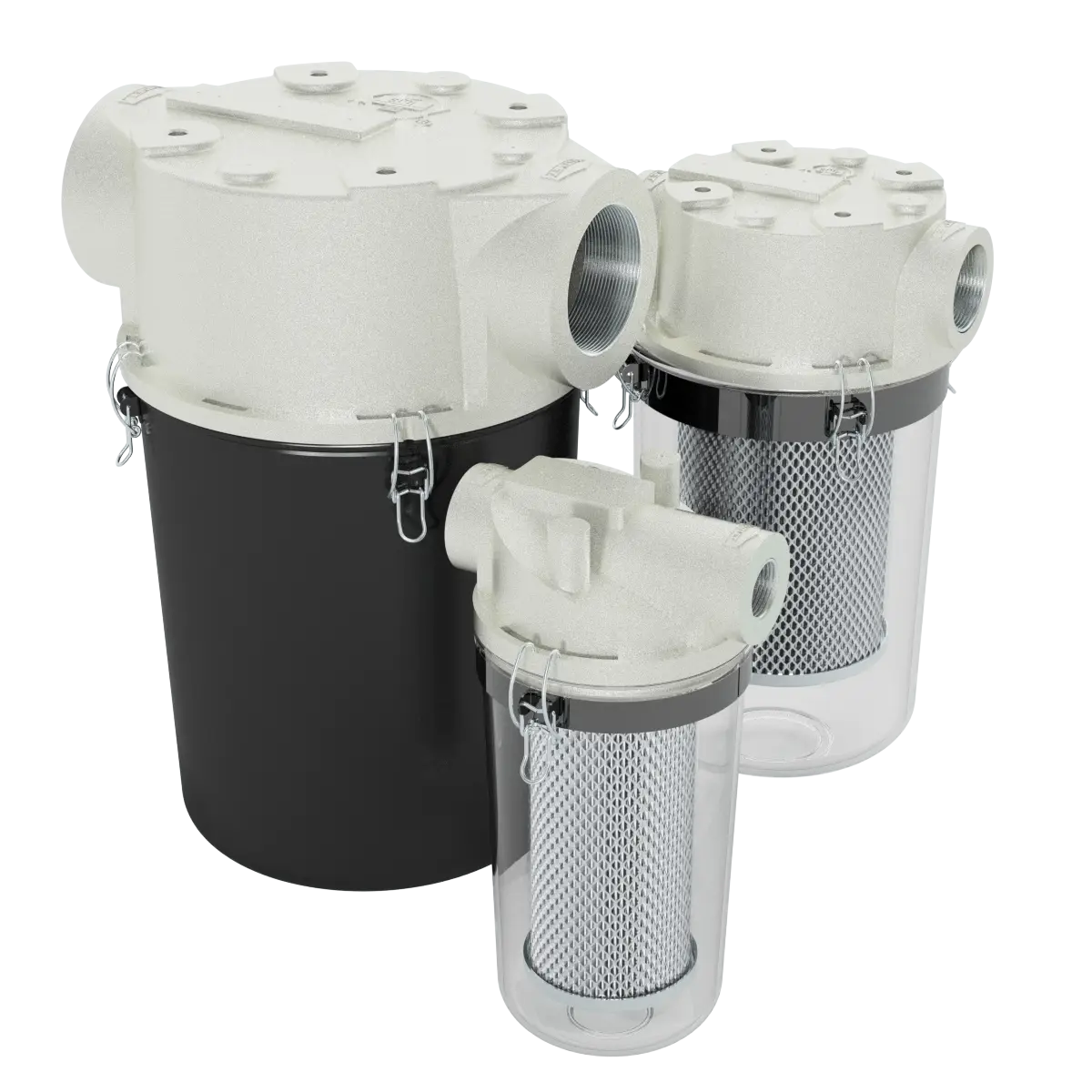Pneumatic Conveying
Vacuum Filtration Pnuematic Conveying Systems
Pneumatic conveying is the backbone of many industries, including plastic production, food processing, and pharmaceutical manufacturing. The process relies on air moving equipment such as blowers, fans, compressors, or vacuum pumps to move materials over long distances while minimizing product degradation and dust emissions. However, the existence of particles and pollutants in the material being moved can pose a significant danger to your equipment, which leaves a risk of premature wear, clogging, and costly breakdowns without proper protection. Integrating a proper filtration system into your process will safeguard your equipment from harm and ensure optimal performance and operational life helping to maximize your return on investment.
Optimize Pneumatic Conveying Systems with Vacuum Filtration
Solberg’s advanced solutions are designed to address various filtration challenges during any pneumatic conveying application. Our filters efficiently capture and remove dust and particulate matter from the compressed air or gas stream before it reaches your vacuum pump, fan, air compressor and/or blower. With our precision engineering and innovative technology, our filters guarantee negligible pressure drops, ensuring seamless airflow through your system. Therefore, your operations will become more efficient, consume less energy, and increase productivity.
Additionally, by preventing dust and contaminants from entering your equipment, you minimize downtime, maintenance costs, and the risk of costly repairs, leading to a more sustainable and profitable production process.
Frequently Asked Questions
What two types of filters are utilized to filter out dirt in pneumatic systems?
Intake filters and filter silencers serve a crucial role in the protection of the positive pressure air moving equipment within a pneumatic conveying system. The addition of a high-quality filter to clean the inlet atmospheric air and protect the blower, compressor, or fan can reduce the possibility of downtime. When noise in the surrounding environment is an issue, silencing can be integrated with the filter in a compact solution called an inlet filter silencer.
If the application involves moisture, a multistage liquid separator / vacuum filter assembly is designed to handle the challenge from the process. Most vacuum pump technologies do not perform well when contaminated with liquid and therefore proper filtration & separation is important.
What is the difference between pressure conveying and vacuum conveying?
Positive pressure conveying is commonly specified to move materials from a single source to multiple destinations over long distances. These systems can utilize a blower, compressor or fan, which helps to introduce product into the conveying lines via a rotary valve that maintains the pressure differential between the ambient atmosphere and the conveying line. From there, the materials travel through the piping, where they are eventually separated by a cyclone separator or fed directly into process storage vessels.
Vacuum pneumatic conveying systems are specified to transport materials under negative pressure. Negative pressure is created by a vacuum pump located at the end of the system. Material is usually introduced to the system via rotary valves and exits the system via cyclone separators. Since vacuum systems are leak tight, they are particularly preferred when conveying hazardous substances.
What is a pulse filter?
Packagers of pneumatic conveying systems often look to specify a self-cleaning filtration system such as the RST or RX reverse pulse series developed by Solberg. A reverse pulse system uses compressed air to purge the loaded filter element of collected dusts. This advanced filtration technology helps to extend filter life, thus extending service and maintenance intervals. The result is maximum process uptime.

Contact us or read our blog for more information on our filtration solutions for pneumatic conveying applications.
-

CSL Series: Right Angle Inlet Vacuum Filters
Important Product Update The small CSL/HDL line will be undergoing a product...
-

F/FT Series: Inlet Filters for Blowers & Compressors
Solberg’s F/FT Series protects your compressor, blower, or fan from atmospheric dirt...
-

FS / PS Series: Filter Silencers for Blowers & Compressors
FS Series: Solberg’s Stamped Steel Filter Silencers remove dirt and debris at...
-

SM SpinMeister® Series: Pre-Cleaner for Air Intake Filters
Solberg’s extreme duty SM SpinMeister® Series is designed as a pre-cleaner to...
-

ST / CT Series: Inline Vacuum Pump Filters
Solberg’s ST/CT Series Vacuum Pump Filters are ideal for rough to medium...
-

Replacement Filter Elements
Solberg offers replacement elements that are perfectly suited to your unique needs....
Need some guidance choosing the ideal solution?
Reach out to a Solberg representative for assistance or get a quote here.
Need answers now? Chat with a live expert today






